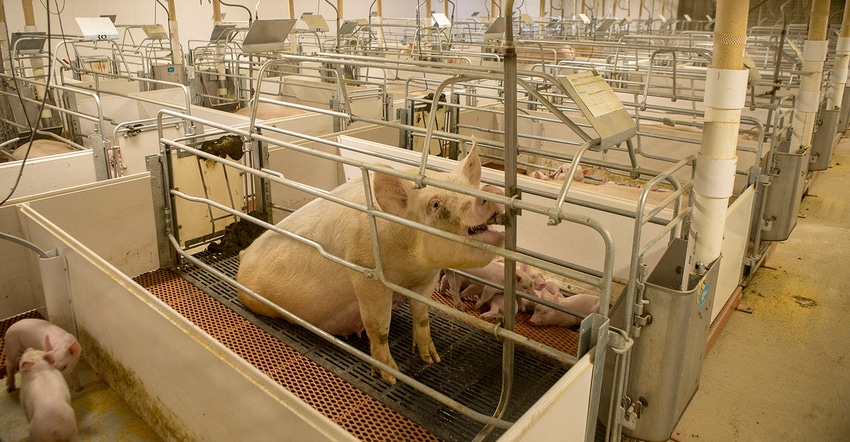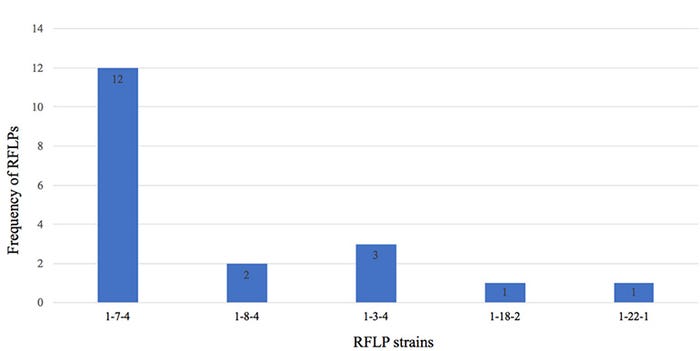Killed virus vaccine as a stand-alone intervention was found to be most common exposure combination in sow population.
February 4, 2020

Vaccination is the predominant means used to control porcine respiratory and reproductive syndrome virus. A range of PRRS vaccine products are available in the United States, and modified live virus vaccines have been widely used for more than 20 years and killed virus vaccines are safer, but trigger limited protective immune response against either homologous or heterologous strains when pigs were not previously primed with a replicating PRRSV.
Although killed PRRSV vaccines have been commercially available for a long time, there is limited information available about demographic characteristics, immunologic management practices associated with its use along with the production impact. Therefore, there is the need to describe vaccination-associated strategies along with their production impact in the breeding herds reporting use of KV PRRS vaccine in an attempt to boost immune response before and/or after a PRRS outbreak.
There needs to be a better understanding of how PRRS KV vaccines are currently being used (i.e. before PRRS outbreaks as a preventive intervention, or therapeutically after outbreak? as part of vaccination strategy in gilts and/or sows? in combination with live-resident virus inoculation, modified-live vaccines, or as stand-alone intervention?). Addressing those questions will allow future, hypothesis-driven intervention studies to improve PRRSV immunization protocols, making the best use of currently commercially available vaccines.
The objective of this study was to describe demographic characteristics, associated management practices and live PRRSV exposure methods of herd outbreaks along with its production impact that adopted a KV vaccination protocol.
Materials and methods
A descriptive epidemiological study was conducted, following 27 PRRSV herd outbreaks from 15 breeding herds reporting vaccination with PRRSV KV vaccine. Data on herd outbreaks were collected by a survey filled by the respective herd veterinarians. In the absence of a universally accepted definition of a PRRS outbreak for the purpose of this study, the "PRRS outbreak was defined as per herd veterinarian judgement."
The herdoutbreaks were divided into two exposure groups i.e. exposure in gilts and exposure in sows. The survey also collected information on key demographic information such as herd size, location of gilt acclimation site (onsite or offsite), weaning frequency (one, two or three-plus times per week), type of PRRSV exposure program used before an outbreak and after an outbreak, types of PRRSV exposure combinations in breeding sows and gilts, number of KV vaccine doses per year before and after a PRRS outbreak, PRRSV restriction fragment length polymorphism type, and U.S. geographic region. The commercial KV vaccine used in this study was from Phibro Animal Health Corp. and the commercial MLV vaccine used was either one of two from Boehringer Ingelheim Vetmedica Inc. or one from Zoetis.
To describe the severity of the PRRS outbreak on the breeding herd productivity between the PRRS immunization groups, time to baseline productivity and total loss per thousand sows were calculated following guidelines previously established.
Results


Conclusion
This study described for the first-time, herd characteristics, management practices and live PRRSV exposure methods associated with use of KV vaccine for PRRS control in infected breeding herds and illustrates the use of KV vaccine as an attempt to boost immune response and keep herd immunity high. The most common PRRSV exposure combinations in the gilt population was LVI upon arrival and then boosted with KV vaccine.
KV vaccine as a stand-alone intervention was found to be most common exposure combination in sow population. Eighty-nine percent of the herd outbreaks had KV vaccination before an outbreak, perhaps as an attempt to maintain "high herd immunity." Likewise, three doses per year was the most commonly used frequency of KV vaccination. The herd outbreaks implementing herd closure had a benefit of reaching TTBP earlier by five weeks than those having no herd closure.
Sources: Gaurav Rawal, Christopher J. Rademacher and Daniel C.L. Linhares, who are solely responsible for the information provided, and wholly own the information. Informa Business Media and all its subsidiaries are not responsible for any of the content contained in this information asset.
You May Also Like



